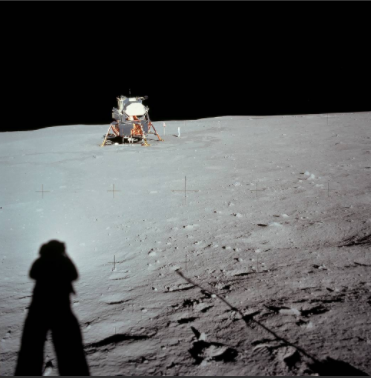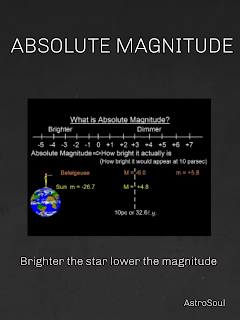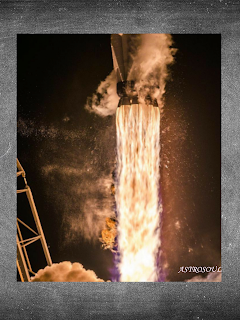"The space elevator will be built about 50 years after everyone stops laughing.”
— Arthur C. Clarke
Ever thought about taking a lift from ground to space ? Well the idea might sound sic-fi and unusual but let me tell you NASA has commissioned the study of elevator in 1990s which concluded that it will be feasible to build one and use it for exploring outer space . In Sept. 2018 an experiment was launched to International space station to test idea that the movement of climber. Not only this , countries like Japan , China , US they all have plans regarding the same . Let's see how did the idea came into existence ?
Birth of Idea of space elevator -
First proposed by a Russian Physicsist Konstantin , the idea finally came into limelight with the novel ' Fountains of Paradise ' by Arthur Clarke . Research was finally started with enthusiasm in this area with the discovery of Carbon Nanotubes ; they play the most important role in realisation of concept of Space Elevator
Building Space Elevator
This is where the things start getting interesting and complex .
Let's first understand the design -
Space elevator is basically a tall cable rising from Earth to Space , terminating in a Counterweight.
The components are - Cable , Counterweight , Anchor and Climber
We need our elevator to be static wrt. to us so we need to assure that all the forces acting on it are Zero.
You must have heard about geostationary satellites - as the name says , they appear static wrt earth ( the time period of rotation of satellite is same as that of Earth 🌎 ) They are placed directly above equator , at a particular height , at which the Gravitational ( force pulling satellite towards earth ) and Centrifugal force ( force pushing it out of Earth ) become equal , that height from surface of earth is = 35786 km .
But the situation is not as simple as satellite in this case . We have cable attached to the satellite which carries its own weight . Upward force - centrifugal force must increase to balance this out . So either increase mass of counter weight ( maybe capture an asteroid ) or increase the height of cable. L
So lets talk carefully here -
The Design
Each portion of tower should be such that total force on it = 0
Total forces acting on a small element of the giant tower are -
Fu : Force due to the portion of tower above the element
Fd: Force due to the portion of tower below the element
W: force due to weight of element and
Fc : Centrifugal force ( Cuz of rotation of Earth )
For the element below geostationary level
W> Fc , which implies to balance this Fu > Fd .
This means that the thickness of tower should increase with increasing height below geostationary level
For the portion of the tower above geostationary level implies W< Fc . To balance this we should have Fu < Fd
 |
LINEAR SCALE HAS BEEN USED TO SHOW INC. AND DEC. IN HEIGHT INSTEAD OF EXPONENTIAL FOR EASE OF REPRESENTATION
|
This means that thickness of tower should decrease with increasing height below geostationary level.
Thus , a free standing tower is the one for which tension drops to 0 at both the ends with maximum value at Geostationary height.
Building from ground mathematically , the tower area should first increase exponentially , maximum height at geostationary level and then decrease exponentially.
We should have something to hold this large structure right ? Here comes the role of anchor .
For building a tower so high and with such a large counterweight , there is a risk of disturbing the orbit of Earth around sun by disturbing Centre of mass , so we need to add an anchor attached to the counterweight through cable , down to earth to prevent it. Our anchor is not a simple hook , it will be located on a mobile , ocean - going platform in Pacific in a specific location . Reason ? By doing this we can avoid space debris , lightening and collisions with satellites .
Let's now discuss about the most crucial impediment to our elevator - the material
We have an important lead here - the taper ratio - which is the ratio of area of tether at the bottom to area at the highest point . Steel , the seemingly promising material in the construction has taper ratio
= 1.6 × 10 ^ 23
Building structure with steel , the area of top of tether is greater than the width of universe by a factor of 10^27 . Steel fails in terms of strength as well.
We require a material which has low density and has high tensile strength . That material is Carbon Nanotubes -
basically rolled up sheets of graphite. There are some major problems with this though -
*The ultimate tensile strength is still arguable outside laboratory and is sensitive to slightest foldings and twists
* We haven't constructed nanotubes in bulk , we have achieved to about 3 cm length
Good news , research is on !!
Finally , let's turn to the climber
Climber will be like a slight modification to a Spacecraft , in terms of locomotion , cable deployment and power systems.
Calculations show that the mass ratio of cable to climber should be 0.86 .
Let's now talk about power source to space lift now -
It's challenging to power the climber to go up . The only possible way comes out to be photovoltaic cells ( a little ) and (mostly) powerful lasers .But still things like prevention of power dissipation have still a lot to work upon.
Ah..so much complications..
Nevermind , let's imagine to have built the one. So, how will we be using the space elevator ?
Space elevator is like one time risky investment , but if it will be stable and successful, we will be jumping into a new era of space exploration
Launching stations can be set up there , we won't have to spend too much fuel in getting rockets out of Earth
Space travel will be cheap enough to $200 / kg as compared to billions of dollars today .
Stations and labs can be setup there with daily supplies
Global monitoring of earth and it's environment can easily be done.
It will open gateway to a new way of living life !!
So many complications , is this realistic and worth research ?
In my opinion , space elevator is quite realistic . Like maybe there is risk on Earth 🌎 , but the situation will be easier with Moon and maybe other planets in terms of low risk factor and type of material required ( like we can go with kevlar instead of Carbon Nanotubes on moon )
Just so many benefits , rely on some innovative Physics- Engineering Research . I think we should never stop research on this topic , goal is not about building an elevator on Earth only , it will bring with it revolution in the field of Material Physics , study of lasers , mechanics and so on ! We aren't losing anything.
What we have found is
interesting , innovative , takes relatively less money and has ability to completely change our ways of living more than any national budget . So let's have a positive attitude and determined approach :)
REFERENCES:
*The physics of the space elevator-P. K. Aravind
Department of Physics, Worcester Polytechnic Institute, Worcester, Massachusetts 01609
*The Space Elevator-Bradley C. Edwards, Ph.D.
*1-Source -The physics of the space elevator-P. K. Aravind
*2-Source- spectrum.ieee.org
*3-Source -The physics of the space elevator-P. K. Aravind
*4-Source-matmatch.com
*5-Source-amp.ibtimes.co.uk
*6-Source-theconversation.com
*7-Source-themeparksandentertainment.com
*8-Source-extermetech.com

































































